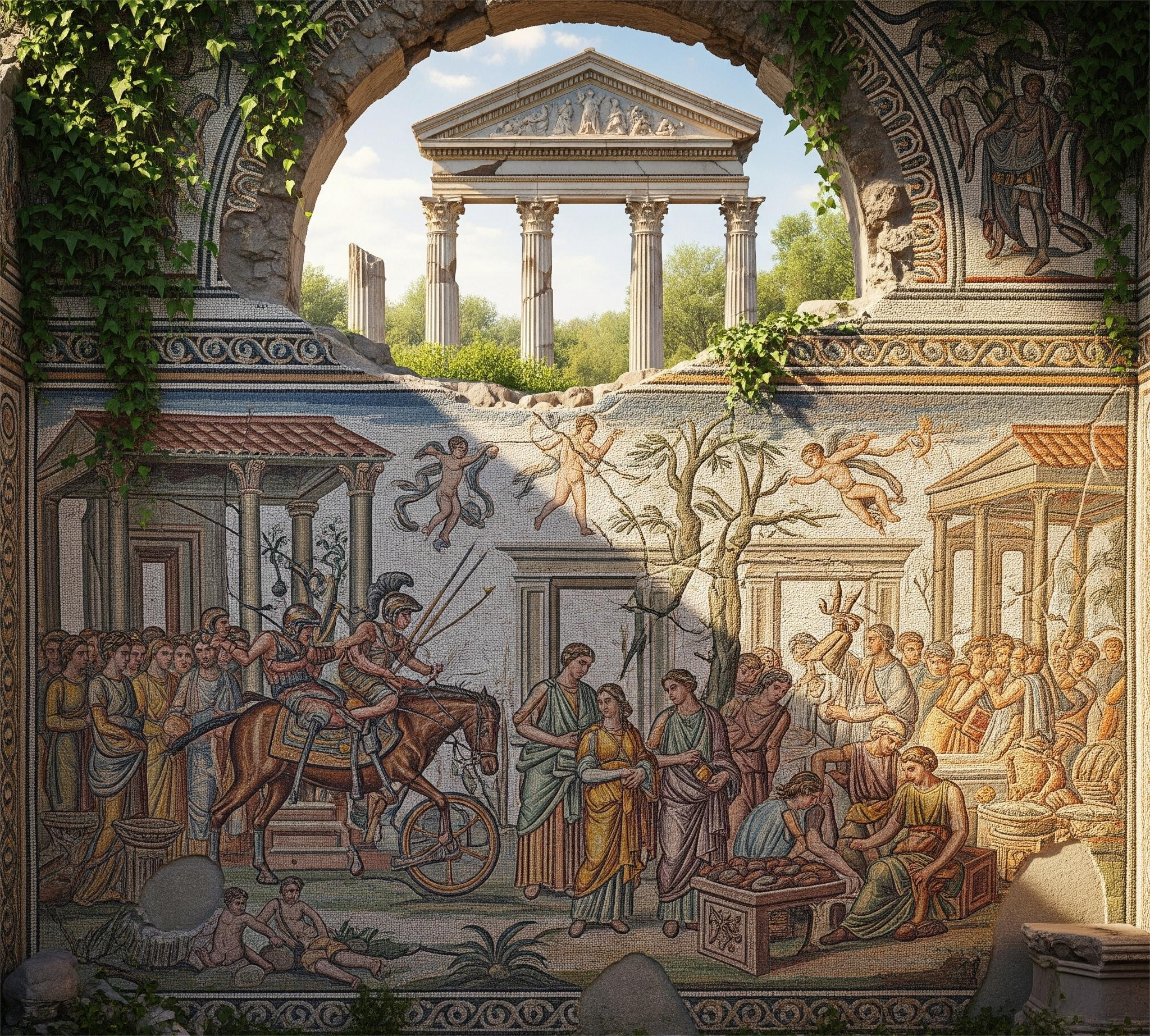From the glittering walls of Byzantine cathedrals to the elegant floors of Roman villas, mosaics played a vital role in shaping the visual and spiritual language of the ancient world. More than just decoration, mosaics were a fusion of art, engineering, and storytelling—one that spanned centuries and empires.
Let’s explore how mosaics functioned in Greek, Roman, and Byzantine cultures, and why their tiny tiles continue to capture the imagination of historians and artists alike.
What Is a Mosaic?
A mosaic is a picture or pattern created by assembling small pieces—called tesserae—of colored stone, glass, ceramic, or other materials. Artists arranged these tesserae into intricate scenes or geometric patterns, often covering walls, ceilings, and floors.
But mosaics weren’t just about aesthetics. They reflected:
Cultural identity
Religious symbolism
Social status
And even political propaganda
Greek Beginnings: From Pebbles to Pattern
Mosaics began in ancient Greece as early as the 5th century BCE. Initially, they used naturally colored pebbles to create geometric designs. Over time, Greek artists began developing more sophisticated techniques:
4th century BCE Macedonian mosaics—like those in Pella, the capital of Macedon—depict mythological scenes such as hunts and gods in action.
Greek mosaics were often floor-based and designed to be walked on, merging utility with artistic beauty.
Key features of Greek mosaics:
Limited color palette using natural stones
Emphasis on balance and symmetry
Scenes from mythology, daily life, and nature
These mosaics laid the groundwork for what would become a central art form in the Roman world.
Roman Mastery: Mosaic as Status and Spectacle
The Romans took mosaics to a whole new level. From the 2nd century BCE onward, mosaic art exploded across the empire.
Key innovations and uses:
Extensive use of colored glass tesserae, allowing for vivid detail and depth
Floor and wall mosaics in private homes, public baths, and temples
Depictions of:
Gods and mythological narratives
Gladiator battles and chariot races
Marine scenes with dolphins, sea monsters, and tridents
Lavish food displays, reflecting wealth and opulence
Perhaps the most famous Roman mosaics are from Pompeii, Herculaneum, and Antioch, showcasing extraordinary realism and movement. The “Alexander Mosaic” from Pompeii, which portrays the Battle of Issus between Alexander the Great and Darius III, remains one of the finest examples of Roman mosaic artistry.
In Roman society, mosaics served as a status symbol. Wealthy patrons commissioned custom pieces for their domus (home) to demonstrate refinement, education, and allegiance to Roman cultural values.
Byzantine Brilliance: Mosaics of the Divine
While Roman mosaics were often secular and narrative, Byzantine mosaics—emerging around the 4th–6th centuries CE—shifted the focus toward the spiritual and symbolic.
Byzantine artists transformed mosaics into tools of worship and expressions of divine light:
Used gold leaf sandwiched in glass to reflect ambient light in sacred spaces
Depicted Christ, the Virgin Mary, saints, and angels in stylized, frontal poses
Placed mosaics on domes, apses, and walls of churches to immerse worshippers in sacred imagery
Famous sites include:
Hagia Sophia (Istanbul): a masterpiece of mosaic-covered domes and icons
San Vitale (Ravenna): with stunning images of Emperor Justinian and Empress Theodora, blending religious and imperial authority
Byzantine mosaics emphasized eternity, order, and divine transcendence—using shimmering surfaces to create a heavenly realm on Earth.






